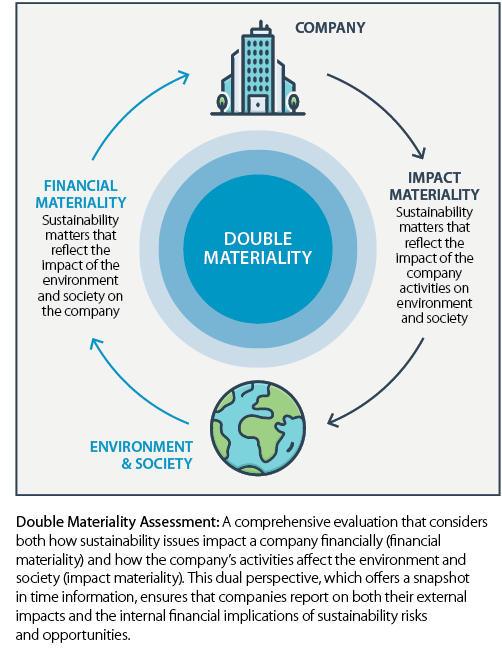With emerging global and federal regulations increasing environmental accountability and requiring reductions in greenhouse gas (GHG) emissions, companies must be prepared to report and verify their emissions. Verifying a company’s GHG data inventory through a third-party assurer is essential to ensure data accuracy, regulatory compliance, and credibility with stakeholders. Apex provides comprehensive third-party verification, ensuring that emissions data meets current standards while enhancing stakeholder trust.
With a deep understanding of the environmental, social, and governance (ESG) landscape and the latest regulatory frameworks, Apex helps organizations navigate the complexities of sustainability assurance and compliance. Our tailored approach ensures that each client’s sustainability strategies meet regulatory requirements while driving stakeholder value. Furthermore, our nationally recognized sustainability and assurance offerings provide clients with the next step beyond compliance to achieving their most ambitious ESG goals.
What to Expect During a GHG Verification Engagement?
Project Management
Aligning administrative processes and expectations is crucial for a successful engagement, especially during verification. With large volumes of data and resources exchanged throughout the process, clear project coordination ensures efficiency and accuracy.
Apex will collaborate with the client to establish a data collection protocol, including access to data collection platforms as needed.
Contextualize
A comprehensive discussion will take place between the client and Apex, reviewing the GHG inventory and data collection process, while also outlining the methodologies for data collection.
Verify
Review of Information: Apex will perform an initial review of the GHG data provided by the client within the desired shared folder. This includes a thorough review of the GHG Inventory; Inventory Management Plan (IMP); any internal data, GHG collection, and management methodology documents (if applicable); as well as the source data for Scope 1, 2, and 3 (if applicable) GHG data.
Prepare a Sampling Plan: Sampling plans are crucial to understanding the robustness of data collection systems, identifying risks or discrepancies, and evaluating the significance of the data in the context of the total emissions or consumption. They also consider consumption volume and geographic location. As such, Apex will request source documentation for a selected number of sites per emissions source and scope. Examples of data and information we may ask for include utility invoices, bills provided by the property owner, spend data reports, and data tracking spreadsheets.
Ensure Accuracy: Apex will conduct interviews with data owners and applicable stakeholders to understand the client’s data management system and reporting accuracy. We will also examine the competencies of those who are responsible for managing and executing the processes that result in sustainability data reporting. Depending on the type of organization and level of verification required, site visits may be necessary to verify a company’s GHG inventory. If applicable, the Apex team will travel to sites to conduct a site tour, review site-level data collection and reporting processes, and review inventory data and source documentation with on-site subject matter experts (SMEs).
Assess the Data: Apex will review the documentation provided by the client to confirm alignment between the source documentation and the client’s GHG inventory.
Finalize
Address Findings: Throughout the verification process, both the client and the Apex team will use an Issue Log file to track and address questions and concerns. This provides centralized documentation of issues that were raised by Apex and addressed by the client.
Technical Review: After the initial level of verification, including confirmation that each scope and category is below ± 5% materiality threshold of error, a final technical review will be conducted. After the initial verification, which confirms that each scope and category is within the ± 5% materiality threshold of error, a final technical review will be conducted. This technical review serves as the final layer of oversight and provides an independent evaluation of the verification process, ensuring the data is accurate before it is published.
Prepare a Verification Opinion: Apex will prepare and issue a signed GHG Verification Opinion for public disclosure. The Verification Opinion will confirm that the data reviewed is accurate, thoroughly assessed, and compliant with relevant standards.
How Can Companies Prepare for GHG Verification?
Prepare an IMP: An Inventory Management Plan (IMP) is a documented resource describing an organization’s process for completing GHG emissions inventory. The plan provides information on emissions calculation methodologies, activity data estimation approaches (if applicable), the selected control approach (operational, financial, or equity share), the emission boundaries (organizational or operational) in place, data collection and management processes, any exclusions to the inventory, contact information, and more. This comprehensive information document supports Apex in the verification process. For further guidance on preparing an IMP, please refer to the US Environmental Protection Agency (EPA) IMP Guidance.
Gather Source Documentation: All data reported in the GHG Inventory must be supported by source documentation. Examples include invoices, estimation calculations, property owner documentation, market-based certificates, financial data, and account tracking spreadsheets. Ensuring this documentation is available and organized before the verification will facilitate a timely audit and demonstrate accuracy in the inventory.
Finalize GHG Inventory: An important criterion for an accurate and complete GHG inventory should include the final reported carbon dioxide equivalent (CO2e) totals by scope and category. To facilitate a timely verification engagement, we recommend the GHG inventory also have clear traceability and visibility into the GHG formulas and inputs within calculations, provide cell-referenced calculations, visible and accurate units of measurement, emission factors and their sources (i.e., database, year, volume), and activity and emissions data broken down by site level and ideally broken out by month. This level of transparency allows Apex to verify the accuracy of the inventory data and to confirm the methodology set forth by the client.
While the above-outlined preparations are helpful in facilitating the verification process and ensuring a timely verification engagement, we recognize that not all clients have the resources or experience to manage this on their own. We are happy to work with you, meet you where you are, and support the verification process.
If you have questions about the GHG verification, its benefits and implications, or want additional information, contact us!
About Apex
Established in 1988, Apex provides award-winning consulting and engineering services with a robust portfolio of capabilities in water, environmental, ESG, health and safety, construction management, transportation, compliance and assurance, and infrastructure. Clients turn to us for our technical expertise, innovative approaches, quick response time, and unparalleled performance.




 The intention of the CSRD is to enhance the transparency of reporting. Additionally, the CSRD will generate a reduction in costs associated with sustainability and ESG reporting over the mid- to long-term as information will already be readily available. This directive may also yield a short-term benefit considering that the Securities and Exchange Commission (SEC) is in the process of proposing rule changes for
The intention of the CSRD is to enhance the transparency of reporting. Additionally, the CSRD will generate a reduction in costs associated with sustainability and ESG reporting over the mid- to long-term as information will already be readily available. This directive may also yield a short-term benefit considering that the Securities and Exchange Commission (SEC) is in the process of proposing rule changes for  The proposed Federal Supplier Climate Risks and Resilience rule requires “significant” and “major” federal contractors to disclose GHG emissions and climate-related risks and set science-based targets. The contractors covered under this rule are assumed to make up 85 percent of the government’s supply chain
The proposed Federal Supplier Climate Risks and Resilience rule requires “significant” and “major” federal contractors to disclose GHG emissions and climate-related risks and set science-based targets. The contractors covered under this rule are assumed to make up 85 percent of the government’s supply chain